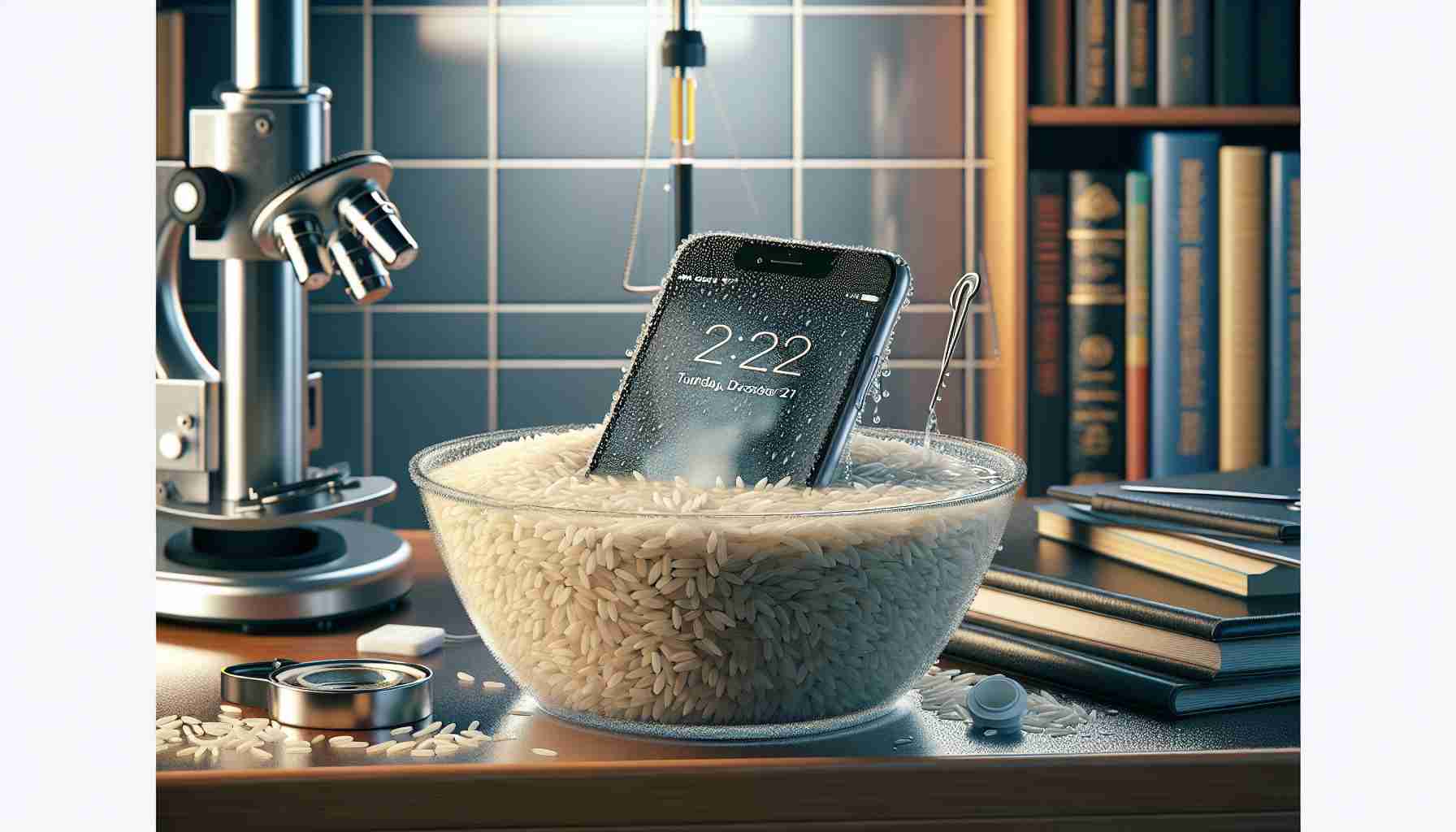Recent insights have dispelled a common myth that suggested submerging a water-damaged smartphone in rice could salvage the device. Contrary to popular belief, rice is incapable of effectively extracting moisture from electronic devices.
Why Your Water-Resistant Phone Can Still Suffer Water Damage
Although some smartphones are marketed as water-resistant, they are not immune to water damage. Incidents such as dropping your phone into the water or getting caught in a heavy downpour can still compromise your device. Critical features like the camera lens could become blurry due to moisture, charging ports might get corroded, and speakers can fail to function.
What You Should Do Instead of Using Rice
Follow these practical steps to mitigate water damage to your smartphone:
– Immediately turn off your smartphone to prevent damage.
– Avoid pressing buttons to lessen the risk of pushing water further inside.
– If your phone fell into a liquid other than water, gently place it in a container of water—avoid rinsing it under a tap.
– Pat the device dry with a soft cloth or paper towel.
– Shake your phone gently to dislodge water from ports, but be careful not to shake it vigorously.
– Remove the SIM card to air out that slot.
– Blow the ports with compressed air; don’t use a hairdryer as the heat can cause additional harm.
– If available, use silica gel packs to absorb moisture. Place them with the phone in an airtight container for half a day.
– Refrain from charging the phone until you’re confident it’s dry.
If none of these steps revive your phone, consider seeking professional assistance rather than attempting to fix it yourself.
Rice as a Desiccant
Many believe that rice acts as a desiccant to absorb moisture effectively, but rice is not as absorbent as commercial desiccants like silica gel. Rice can take in moisture but not sufficiently for the needs of a wet electronic device.
The Science Behind the Ineffectiveness of Rice
Rice’s ability to absorb moisture is lower compared to options specifically designed for moisture control. Moreover, the starch from rice can leave residue on the electronic components, potentially causing corrosion or growth of mold.
Questions and Answers
Q: Why doesn’t rice work well for drying out electronics?
A: Rice is less absorbent compared to other materials and methods. It can also leave behind starch that can be harmful to electronic components.
Q: What is an effective alternative to rice for drying a smartphone?
A: Silica gel, which is often found in packets accompanying new shoes or electronics, is a more effective desiccant than rice. Electronic drying pouches specifically designed for wet electronics are also available.
Challenges and Controversies
A challenge is educating the public to abandon old myths and adopt more effective methods for dealing with wet electronics. Misinformation persists, partly because the myth is widespread and has been informally endorsed through word of mouth and social media.
Advantages and Disadvantages
Advantages of Using Silica Gel or Professional Services:
– Higher absorbency rate compared to rice.
– Minimized risk of introducing contaminants to the device.
– Professional services can identify and address damage that may not be apparent to the untrained eye.
Disadvantages:
– Silica gel packets need to be on-hand before the incident, as acquiring them after the fact may not be convenient.
– Professional electronic repair services can be expensive.
Related Resources
For additional insights into smartphone care and repair, including alternative methods to dealing with water damage, you might visit popular technology news and advice websites like CNET or TechRadar. If you’re interested in the science behind desiccants and their industrial applications, the American Chemical Society website at ACS could be a helpful resource. Also, it might be worth checking out consumer electronic sites like Consumer Reports for reviews and advice on products for drying out wet electronics. Remember to only follow the links if you’re sure that the URLs are 100% valid.
